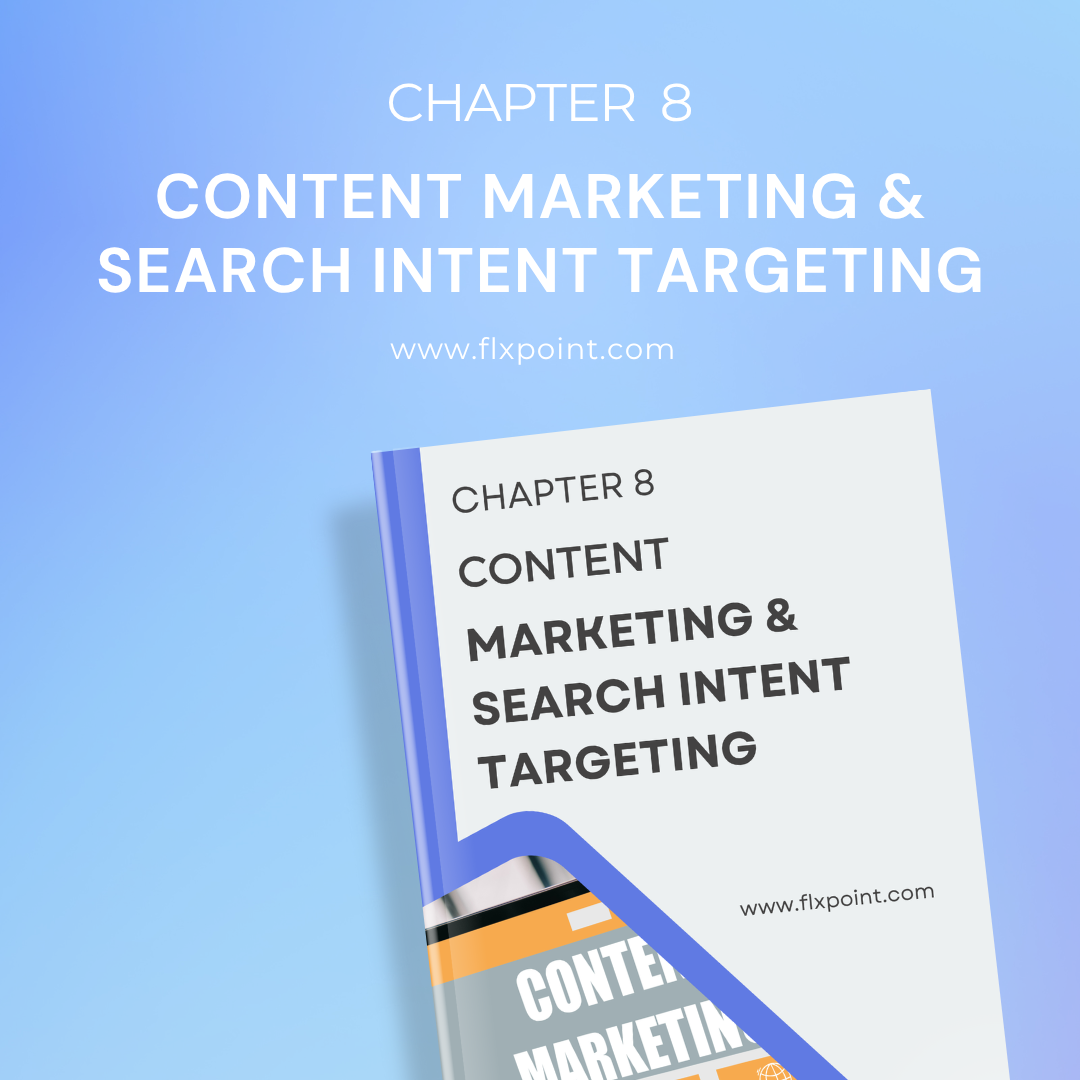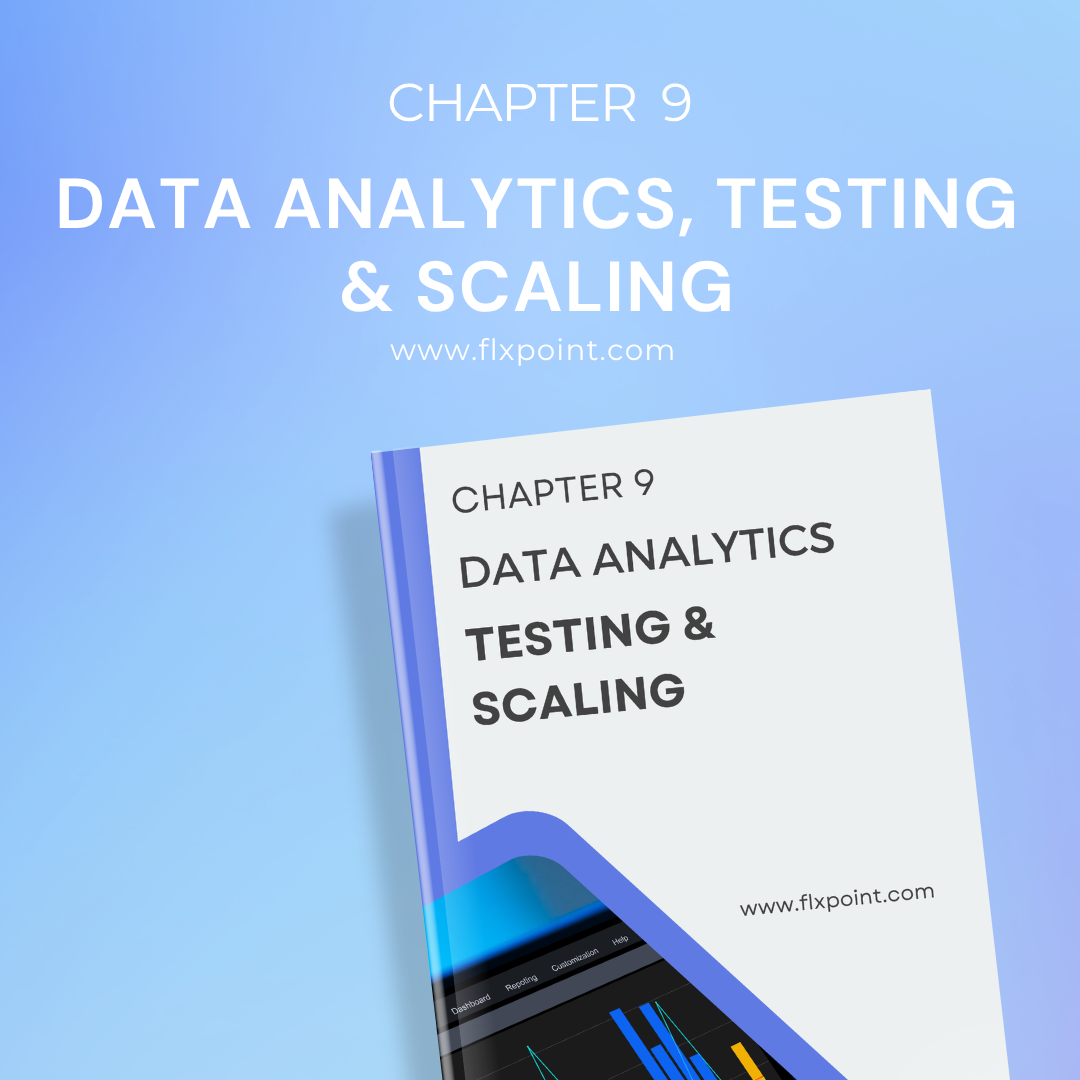Chapter 1 Choosing the Right Ecommerce Platform
Learn which platform fits your dropshipping business best. Compare Shopify, WooCommerce, BigCommerce, and Wix to make the right choice for your growth plans.
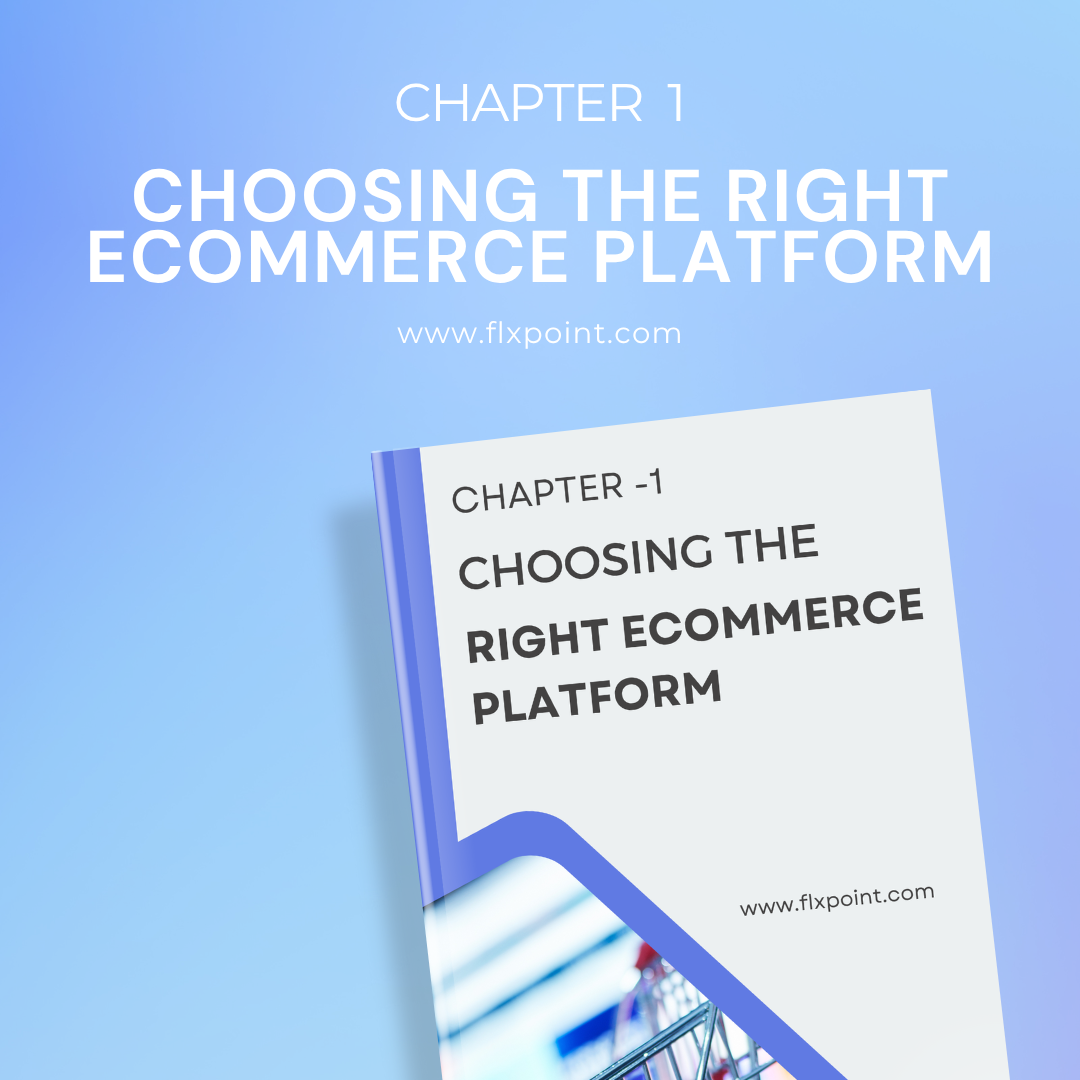
Table of Contents
- Comparison Overview: Shopify vs WooCommerce vs BigCommerce vs Wix
- Scalability and Hosting Requirements
- Native Marketing Tools and App Integrations
- SEO and Speed Performance Capabilities
- Payment Gateways, Fees, and Checkout Customization
- Best Use Cases for Each Platform Based on Business Size and Model
Introduction
Selecting the correct ecommerce platform serves as the keystone of your business operations. Picking the right ecommerce platform can make or break how smoothly you run your business — today and as you grow. This decision impacts everything from your daily workflow to long term growth potential. The right platform empowers you to focus on strategy and customer acquisition rather than wrestling with technical limitations.
Given the multitude of options available, making this choice requires careful consideration of your specific business needs, technical capabilities, and growth objectives. This chapter examines four leading contenders: Shopify, WooCommerce, BigCommerce, and Wix, offering a detailed analysis to help you make an informed decision.
Comparison Overview: Shopify vs WooCommerce vs BigCommerce vs Wix
Here’s how today’s top platforms stack up, so you can find the one that fits your business philosophy, goals, and technical comfort level.
Shopify provides an all-inclusive hosted solution, while WooCommerce offers open-source flexibility. BigCommerce balances robust features with scalability, and Wix delivers user-friendly simplicity.
The biggest difference lies in how much control versus convenience you want. WooCommerce gives you complete ownership but requires more technical knowledge. Shopify and BigCommerce handle the technical aspects but with less customization freedom. Wix prioritizes ease of use but with some limitations for complex stores.
Platform Comparison Table
|
Feature |
Shopify |
WooCommerce |
BigCommerce |
Wix |
|
Starting Price |
$29/month |
Free plugin + hosting ($10+/month) |
$39/month |
$17/month |
|
Transaction Fees |
0% with Shopify Payments; otherwise 0.6% to 2% |
None (payment processor fees apply) |
None (payment processor fees apply) |
None (payment processor fees apply) |
|
Hosting Included |
Yes |
No |
Yes |
Yes |
|
Templates/Themes |
200+ (13 free) |
Thousands (free and paid) |
100+ |
900+ |
|
Customization |
Moderate |
Extensive |
Moderate |
User friendly |
|
Technical Skill Required |
Low |
High |
Low to moderate |
Very low |
|
App Ecosystem |
Large, curated |
Extensive WordPress plugins |
Growing marketplace |
Limited but focused |
|
Scalability |
Good with enterprise options |
Unlimited but requires management |
Excellent with automatic upgrades |
Limited for large operations |
|
SEO Capabilities |
Built in |
Excellent with plugins |
Built in |
Good |
|
Support |
24/7 |
Community and plugin developers |
24/7 |
24/7 |
|
Best For |
Growing businesses wanting simplicity |
Technical users needing complete control |
Fast growing businesses |
Small businesses and beginners |
Scalability and Hosting Requirements
When your online store faces unexpected traffic surges during sales events or marketing campaigns, the difference between success and failure often comes down to your platform's ability to manage back-operations. Each major ecommerce platform approaches scalability differently, with distinct hosting requirements that directly impact your business performance.
Understanding Ecommerce Scalability
Scalability represents your store's capacity to handle growth without performance degradation. This includes managing more products, higher traffic volumes, and increased transactions while maintaining speed and reliability.
Shopify: Built for Growth with Managed Hosting
Shopify is a fully hosted solution, meaning they handle servers, security, and updates. This makes it easy to scale without worrying about technical backend issues.
Key Scalability Features
- Automatic resource allocation – Shopify’s cloud infrastructure adjusts to traffic spikes.
- Global CDN – Fast loading times worldwide.
- Unlimited products & bandwidth – No restrictions on catalog size or visitor numbers.
- High uptime (99.99%) – Minimal downtime even during peak periods.
Shopify’s hosting is optimized for speed and reliability, making it ideal for stores expecting rapid growth. However, customization is limited compared to self-hosted solutions like WooCommerce.
BigCommerce: Enterprise-Grade Scalability
BigCommerce is another SaaS (software-as-a-service) platform with strong scalability features. It’s designed for high-volume sellers and large catalogs.
How It Handles Growth
- Multi-cloud hosting – Uses Google Cloud, AWS, and Fastly for redundancy.
- No transaction limits – Even on lower-tier plans.
- Built-in CDN & DDoS protection – Ensures fast, secure performance globally.
- API-first architecture – Easily integrates with third-party systems as your operations expand.
BigCommerce is a solid choice for businesses planning to scale quickly, especially those selling across multiple channels.
Wix: User-Friendly but with Limits
Wix offers ecommerce functionality through Wix Stores, making it simple for small to mid-sized businesses. However, its scalability has some constraints.
Strengths & Limitations
- Automatic scaling – Handles traffic spikes via multi-cloud hosting (AWS, Google Cloud, Fastly).
- Global CDN – 200+ nodes for faster content delivery.
- Storage limits – Even high-tier plans cap storage, which may be restrictive for large inventories.
- Fewer advanced features – Lacks some enterprise-level tools found in Shopify or BigCommerce.
Wix works well for stores with moderate growth expectations but may not be the best fit for massive expansion.
WooCommerce: Flexible but Requires Hands-On Hosting
WooCommerce is a self-hosted WordPress plugin, meaning you’re responsible for choosing and managing your hosting. This offers full control but also more complexity.
Scaling Challenges & Solutions
- Hosting-dependent performance – Speed and uptime rely on your hosting provider.
- Manual scaling – You must upgrade server resources as traffic grows.
- Plugins for optimization – Caching (Redis), CDN (Cloudflare), and image optimization help.
- Unlimited customization – No restrictions on products, design, or functionality.
For serious scalability, WooCommerce stores need high-performance hosting like Kinsta or Cloudways. Autonomous hosting solutions with Kubernetes (like Cloudways) can auto-scale resources during traffic surges.
Essential Hosting Components for Ecommerce Scalability
Regardless of your chosen platform, certain hosting elements remain critical for proper scalability:
Content Delivery Network (CDN): Distributes your content globally to reduce latency and improve load times for all visitors. Shopify and Wix include this automatically, while WooCommerce requires implementation.
Caching Solutions: Temporary storage of site elements reduces database queries and server load. Advanced caching particularly benefits WooCommerce stores during traffic spikes.
Database Optimization: Proper database management prevents bottlenecks during high-traffic periods. This is especially important for WooCommerce stores with large product catalogs.
Autoscaling Capabilities: The ability to automatically add resources during traffic surges without manual intervention keeps your store running smoothly during peak periods.
Native Marketing Tools and App Integrations
Each ecommerce platform offers a distinct blend of built-in tools and third-party integrations that impact how effectively you can acquire customers, drive conversions, and build loyalty. This comparison focuses on what each platform delivers out of the box versus what requires additional apps or development.
Email Marketing and Customer Communication
Shopify includes basic email marketing functionality with subscriber management for smaller lists (under 2,500 contacts). Their abandoned cart recovery sends automated reminders to customers who leave items unpurchased. For more advanced needs, Shopify connects with specialized platforms like Klaviyo, which offers deeper segmentation based on customer behavior.
WooCommerce provides customizable transactional emails but lacks native marketing email capabilities. This gap requires WordPress plugins such as MailPoet or external services like Mailchimp. The advantage here is complete control over email templates and customer data, but it comes with additional setup complexity.
BigCommerce offers a more comprehensive abandoned cart recovery system with multi-stage email sequences that can be customized based on cart value or customer type. Their native customer segmentation tools allow for targeted promotions without requiring additional apps.
Wix includes a straightforward email marketing system that connects directly with your product catalog. Their automation options are simpler than competitors but sufficient for basic promotional needs and order status communications.
SEO and Content Marketing
Shopify provides fundamental SEO tools including customizable title tags, meta descriptions, and structured data. Their blog functionality is adequate but lacks the content management capabilities of dedicated CMS platforms. The URL structure in Shopify is predetermined, which can limit advanced SEO customization.
WooCommerce inherits the powerful SEO foundation of WordPress, offering complete control over site architecture, content organization, and metadata. This native WordPress integration creates significant advantages for content marketing and search visibility, particularly when combined with plugins like Yoast SEO.
BigCommerce includes Google AMP support for faster mobile loading and comprehensive schema markup out of the box. Their URL structure is fully customizable, and their integrated blog platform includes SEO optimization tools specifically designed for ecommerce content marketing.
Wix offers their SEO Wiz tool, which provides step-by-step guidance for optimizing your store. While convenient for beginners, experienced marketers may find it limiting compared to the flexibility offered by other platforms. Wix's content tools focus on simplicity rather than advanced publishing capabilities.
Social Commerce and Marketplace Integration
Shopify excels in social selling with native integrations for Facebook, Instagram, and TikTok shops. Their platform allows direct product synchronization and unified order management across these channels without requiring additional apps.
WooCommerce requires extensions for most social commerce connections. While this creates additional costs and complexity, it also allows for more customized implementations. The WooCommerce Marketplace Extension connects to various selling channels but demands more technical setup than Shopify's approach.
BigCommerce features Channel Manager, which centralizes your selling operations across social platforms and marketplaces like Amazon and eBay. This native functionality streamlines inventory management for businesses selling through multiple channels, making it particularly valuable for mixed fulfillment models.
Wix provides straightforward Facebook and Instagram catalog integration but offers fewer native marketplace connections than competitors. Their social selling tools focus on accessibility rather than advanced features, which may limit sophisticated multi-channel strategies.
Customer Retention and Loyalty
Shopify requires apps for comprehensive loyalty programs, with popular options including Smile.io and LoyaltyLion. Their discount system allows for basic retention marketing through promotional codes, but advanced customer relationship management needs additional tools.
WooCommerce offers extensive customization potential for loyalty systems through extensions like AutomateWoo or YITH WooCommerce Points and Rewards. The open-source nature allows for bespoke loyalty programs tailored to specific business models, though implementation complexity increases accordingly.
BigCommerce includes more sophisticated native customer grouping and targeted pricing capabilities, allowing for tier-based loyalty approaches without additional apps. Their customer account features support advanced personalization that can drive repeat purchases.
Wix provides basic discount management with scheduling capabilities but requires apps for comprehensive loyalty programs. Their customer review collection and display functionality comes standard, supporting social proof without additional integration.
Analytics and Performance Tracking
Shopify includes solid baseline analytics covering sales, customer behavior, and basic marketing performance. Their native reporting falls short for attribution modeling and advanced marketing analysis, typically requiring Google Analytics integration or specialized apps.
WooCommerce depends on external tools for comprehensive analytics. This creates implementation work but allows for highly customized reporting stacks tailored to specific business requirements and marketing channels.
BigCommerce delivers more detailed native analytics than most competitors, including customer group performance, detailed conversion funnels, and marketing effectiveness reporting. Their built-in tools reduce dependency on third-party analytics for many standard marketing insights.
Wix offers straightforward analytics focused on basic site performance, traffic sources, and conversion data. Their reporting emphasizes accessibility over depth, often requiring additional tools for sophisticated marketing analysis.
Integration Considerations for Complex Fulfillment Models
For businesses managing multiple fulfillment sources, the marketing tool ecosystem must support accurate inventory attribution and consistent customer communications across channels. Platforms differ significantly in how they handle these complex scenarios.
The ideal solution provides unified customer data across channels while maintaining distinct inventory pools and fulfillment rules. This enables personalized marketing based on complete customer history while respecting the operational realities of diverse fulfillment sources.
When selecting an ecommerce platform, compatibility with end to end automation solutions like Flxpoint becomes a critical decision factor for multi source retailers. These integration capabilities significantly impact marketing effectiveness by ensuring product data, inventory levels, and fulfillment status remain synchronized across your entire selling ecosystem.
SEO and Speed Performance Capabilities of Ecommerce Platforms
Studies consistently show that speed directly correlates with customer behavior. A mere 0.1-second improvement in load time can increase conversions by 8.4% and average order value by 9.2%. Even a blink of a delay can cost you. Studies show shaving off just 0.1 seconds in load time can boost conversions by over 8.4% and average order value by 9.2% — that’s real revenue on the line. This translates to substantial revenue when scaled across thousands of transactions.
Similarly, organic search visibility drives 53% of website traffic on average, making SEO capabilities a fundamental consideration when selecting an ecommerce platform.
Platform-Specific SEO Capabilities
Each major ecommerce platform approaches SEO differently, with varying levels of native functionality and customization options.
WooCommerce leverages WordPress's content management foundation, providing exceptional flexibility for content creation and SEO customization. This integration allows for complete control over URLs, meta tags, and content optimization. The platform excels for retailers who prioritize content marketing alongside product listings, though this flexibility comes with increased technical complexity.
Shopify balances user-friendliness with solid SEO capabilities. Its native features include automatic sitemap generation, customizable meta fields, and canonicalization to prevent duplicate content issues. Shopify creates logical URL structures but inserts fixed elements like "/products/" that cannot be removed, which some SEO specialists consider suboptimal.
BigCommerce stands out with its enterprise-level SEO tools built directly into the platform. It offers fully customizable URLs, category-specific metadata templates, and automatic Google AMP support for mobile optimization. For large catalogs with multiple product variants, BigCommerce provides superior handling of canonical tags to maintain search ranking integrity.
Wix has significantly improved its SEO capabilities, offering an intuitive SEO Wiz tool that guides users through optimization steps. While convenient for smaller operations, Wix lacks some advanced technical SEO features needed by larger retailers with complex product catalogs or fulfillment structures.
Speed Performance Across Platforms
Speed optimization capabilities vary substantially between platforms, with implications for both user experience and search rankings.
Shopify delivers consistently strong page load speeds through its globally distributed hosting infrastructure and integrated CDN. Recent Core Web Vitals data shows Shopify leading with 77% of sites passing Google's performance thresholds. This advantage becomes particularly valuable for retailers with international customers.
BigCommerce follows closely with strong server response times and optimized mobile performance. Its native image optimization processes product photos automatically, reducing a common speed bottleneck without requiring additional tools or configurations.
WooCommerce performance depends heavily on hosting quality and implementation. When paired with performance-focused hosting, WooCommerce can achieve excellent speed metrics through server-side caching and optimized database queries. However, this requires more technical configuration than hosted platforms.
Wix has historically struggled with speed performance but has made significant improvements. Recent platform updates have enhanced Core Web Vitals scores, though it still lags behind competitors for complex ecommerce implementations with large product catalogs.
Technical SEO Elements for Multi-Source Retailers
For retailers managing multiple fulfillment sources, certain technical SEO capabilities become particularly important:
Inventory Status Handling: How platforms communicate out-of-stock items to search engines impacts visibility. BigCommerce and Shopify provide structured data markup that accurately communicates inventory status, while WooCommerce requires additional plugins.
Location-Based Redirects: For businesses shipping from multiple warehouses, the ability to create location-specific URLs and appropriate redirects helps maintain SEO equity while serving geographically relevant content.
Schema Markup Implementation: Advanced product schema helps search engines understand complex product relationships and fulfillment options. BigCommerce offers the most comprehensive native schema implementation, while WooCommerce provides the most customization potential through plugins.
Speed Optimization for Complex Catalogs
Multi-source retailers typically manage larger product catalogs with multiple variants, creating unique speed challenges:
Asynchronous Loading: Shopify and BigCommerce implement asynchronous JavaScript loading by default, allowing critical content to display while non-essential elements load in the background.
Database Efficiency: WooCommerce can struggle with database performance for extremely large catalogs unless specifically optimized. BigCommerce uses a proprietary database architecture designed specifically for handling complex product relationships efficiently.
CDN Integration: Content Delivery Networks significantly improve global performance. Shopify and BigCommerce include CDN services automatically, while WooCommerce requires separate implementation.
Selecting the Right Platform for Your Operations
Your optimal platform depends on your technical resources, fulfillment complexity, and growth trajectory. For retailers with multiple fulfillment sources, considerations should include:
- The scale and complexity of your product catalog
- Geographic distribution of your customer base
- In-house technical capabilities
- Content marketing requirements
- Integration needs with existing fulfillment systems
The platform that best balances SEO potential with speed performance for your specific operation will ultimately deliver the strongest return on investment through improved visibility, user experience, and conversion rat
Payment Gateways, Fees, and Checkout Customization
In today's increasingly cashless economy, your choice of payment gateway directly impacts conversion rates, customer satisfaction, and operational efficiency. For retailers managing multiple fulfillment sources, this decision becomes even more critical as payment systems must integrate seamlessly with your diverse operational channels.
Understanding Payment Gateways for Complex Retail Operations
Payment gateways serve as the digital equivalent of a physical cash register, securely transmitting transaction data between your store and financial institutions. They perform several crucial functions:
- Securely capturing payment information
- Encrypting sensitive customer data
- Routing authorization requests to appropriate banks
- Facilitating fund transfers to merchant accounts
- Providing reconciliation reporting for accounting
For multi-source retailers, certain gateway capabilities become particularly valuable. The ability to attribute transactions to specific fulfillment sources, split payments between multiple vendors, and maintain unified reporting across disparate channels can significantly streamline operations.
Gateway Types and Their Impact on Customer Experience
Your selection between the three primary gateway types substantially affects the customer checkout journey:
Self-hosted gateways collect payment data directly on your site, keeping customers within your branded environment throughout the entire checkout process. This provides maximum control over the customer experience but places the compliance burden squarely on your business. Stripe exemplifies this approach, offering extensive customization options while maintaining a seamless checkout flow.
Hosted payment pages redirect customers to the payment provider's secure site to complete transactions before returning them to your confirmation page. While this approach simplifies compliance requirements, it creates a context switch that can reduce conversion rates by up to 10%. PayPal's standard integration follows this model.
Hybrid solutions strike a balance by collecting data on your site but processing it through the provider's systems. This approach often delivers the best combination of user experience and security for complex retail operations. Authorize.net represents this category well.
Fee Structures and Their Business Impact
Payment gateway costs typically include a combination of:
Processing fees generally range from 2.5% to 3.5% plus a fixed amount (typically $0.25 to $0.30) per transaction. These fees vary based on:
- Transaction volume (higher volumes often qualify for lower rates)
- Card types (premium rewards cards often carry higher fees)
- Regional factors (cross-border transactions typically cost more)
Monthly service fees range from zero (Stripe, PayPal) to $25+ (Authorize.net) depending on features and support levels.
Additional costs might include:
- Setup fees (though most modern gateways have eliminated these)
- Account maintenance fees
- PCI compliance fees
- Chargeback fees (typically $15-25 per incident)
For a retailer processing $100,000 monthly, the difference between a gateway charging 2.6% + $0.10 versus 3.0% + $0.30 amounts to approximately $500 monthly. Over years of operation, this difference compounds significantly.
Strategic Gateway Selection for Multi-Source Operations
When managing multiple fulfillment sources, some gateways offer distinct advantages:
Stripe provides extensive customization through its API, allowing you to attribute transactions to specific fulfillment sources. Its Events API facilitates real-time data flow between payment systems and inventory management.
PayPal offers strong consumer trust and simpler implementation, but provides less flexibility for complex operational models. However, its widespread adoption makes it a valuable supplementary payment option.
Authorize.net delivers excellent stability and merchant account integration, with particularly strong recurring billing capabilities for subscription models.
Amazon Pay leverages customers' existing Amazon accounts, potentially reducing friction, especially if your business already sells through Amazon's marketplace alongside your direct channels.
The ideal approach for many multi-source retailers involves implementing a primary gateway for most transactions while offering 1-2 alternative payment methods to accommodate customer preferences.
Checkout Customization Best Practices
Your checkout design significantly impacts conversion rates. Research indicates that optimized checkout flows can increase conversions by 35% compared to poorly designed alternatives. Key elements include:
Progress indicators help customers understand where they are in the checkout process, reducing abandonment. For operations involving multiple shipping options based on fulfillment source, clear visibility into these stages becomes particularly important.
Field validation should happen in real-time rather than after submission attempts. This reduces frustration and abandonment rates.
Address verification integrated with carrier data can reduce failed deliveries by confirming shipping addresses match fulfillment capabilities.
Payment method display should prioritize options based on customer location and previous selections. The ability to present different payment methods based on which fulfillment source will handle the order can streamline operations.
Mobile optimization remains critical, with mobile commerce continuing to grow. Each payment field should be properly sized for thumb-based input.
Integration with Broader Operations
The true power of payment gateways for multi-source retailers comes from their integration capabilities. Your gateway should connect seamlessly with:
- Order management systems
- Accounting software
- Tax calculation services
- Fraud prevention tools
- Customer relationship management platforms
These integrations create a unified data ecosystem that maintains order integrity even when fulfillment occurs through different warehouses, dropshippers, or 3PL providers.
For complex retail operations, the payment gateway becomes more than a transaction processor. It serves as a crucial data hub connecting customer experience with back-end operations, making thoughtful selection and implementation essential to long-term success.
Best Use Cases for Each Platform Based on Business Size and Model
The perfect ecommerce platform varies significantly based on your business size, operational model, and growth trajectory. Each platform excels in specific scenarios while presenting limitations in others. Understanding these strengths and weaknesses helps you align your selection with your particular business requirements.
Shopify: Optimized for Growth-Focused Direct-to-Consumer Brands
Ideal Business Size: Small to medium businesses with plans for rapid scaling
Best For:
- Direct-to-consumer (DTC) brands focused on growth
- Businesses with limited technical resources
- Companies needing quick market entry
- Retailers requiring POS integration with their online store
Shopify shines brightest for businesses prioritizing growth over complete customization. Its fully hosted environment eliminates technical concerns while providing tools that scale alongside your business. The platform's streamlined approach to launching and operating an online store makes it particularly valuable for companies with lean teams.
For multi channel sellers, Shopify offers strong integration with social selling channels and marketplaces. This creates unified inventory management across platforms without requiring extensive development resources.
WooCommerce: Perfect for Content-Rich Custom Experiences
Ideal Business Size: Any size with technical resources or budget for developers
Best For:
- Content marketing focused brands
- Businesses with unique operational workflows
- Companies with existing WordPress investments
- Organizations requiring complete data ownership
WooCommerce provides unmatched customization potential for businesses needing tailored shopping experiences. Its WordPress foundation makes it exceptionally strong for content marketing strategies, creating opportunities for organic traffic growth.
For businesses with complex, custom requirements, WooCommerce offers freedom that hosted platforms cannot match. This flexibility extends to hosting choices, allowing you to select infrastructure appropriate for your specific performance needs.
Less Suitable For: Early stage companies without technical expertise or businesses needing immediate launch with minimal setup complexity.
BigCommerce: Built for Multichannel Enterprise Operations
Ideal Business Size: Medium to enterprise businesses, particularly those with high transaction volumes
Best For:
- B2B and wholesale operations
- High volume merchants (1,000+ SKUs)
- Businesses selling across multiple channels
- Companies requiring advanced native functionality without plugins
BigCommerce delivers enterprise capabilities without the enterprise complexity. Its architecture handles large catalogs and high transaction volumes exceptionally well, while its native B2B features support wholesale operations without additional extensions.
Wix: Designed for Small Creative Businesses
Ideal Business Size: Small businesses and solopreneurs
Best For:
- Creative professionals selling limited product lines
- Service businesses with supplementary product sales
- Early stage brands testing market fit
- Businesses prioritizing design flexibility for non technical users
Wix excels for small businesses needing visual impact and ease of use. Its intuitive drag and drop interface allows for creating visually compelling stores without coding knowledge, while its integrated business tools provide everything needed for smaller operations.
The platform's simplified approach works particularly well for businesses where ecommerce supplements a service offering rather than serving as the primary business model.
Less Suitable For: Rapidly scaling businesses, companies with large inventories, or operations with complex fulfillment requirements.
Strategic Considerations for Multi Source Retailers
For retailers managing multiple fulfillment sources, platform selection involves additional considerations beyond general use cases:
Inventory Segmentation: BigCommerce and WooCommerce offer the strongest native capabilities for attributing products to different warehouses or suppliers.
Order Routing Logic: Complex fulfillment models benefit from WooCommerce's flexibility, though this requires custom development. BigCommerce offers more sophisticated routing options out of the box.
Fulfillment Integration: All platforms can integrate with systems like Flxpoint for advanced order routing and inventory management, but implementation complexity varies:
- Shopify offers straightforward API integration with moderate customization
- WooCommerce provides unlimited flexibility but requires more development
- BigCommerce offers robust native capabilities with clean API architecture
- Wix has more limited integration capabilities for complex operational models
Connect your suppliers, stores, and accounting system seamlessly with Flxpoint. Our platform handles complex integration challenges without requiring developer assistance, supporting 250+ supplier integrations and 20+ pre-built vendor connectors for platforms like Shopify, Amazon, WooCommerce, and BigCommerce. Automate your multi-channel inventory, streamline your order fulfillment, and scale your business with our no-code integration tools. Get a Demo to see how Flxpoint can simplify your multi-source retail operations.
Whether you're juggling suppliers, marketplaces, or fulfillment partners, Flxpoint brings it all together — no dev team required. Our no-code platform takes care of the heavy lifting, so you can automate operations, stay ahead of demand, and grow without adding complexity.
Curious how it works in action? Book a demo and see how Flxpoint can simplify your retail operations from source to sale.
Guide Chapters
- Chapter 1: Choosing the Right Ecommerce Platform
- Chapter 2: Technical Store Optimization for Conversions
- Chapter 3: SEO for Dropshipping – Advanced Tactics
- Chapter 4: Paid Media Mastery
- Chapter 5: Social Media & Content Engines
- Chapter 6: Influencer, Affiliate & Ambassador Programs
- Chapter 7: Email & SMS Marketing Automation
- Chapter 8: Content Marketing & Search Intent Targeting
- Chapter 9: Data Analytics, Testing & Scaling
- Chapter 10: Building Brand Loyalty & Advocacy
All Chapters in This Guide
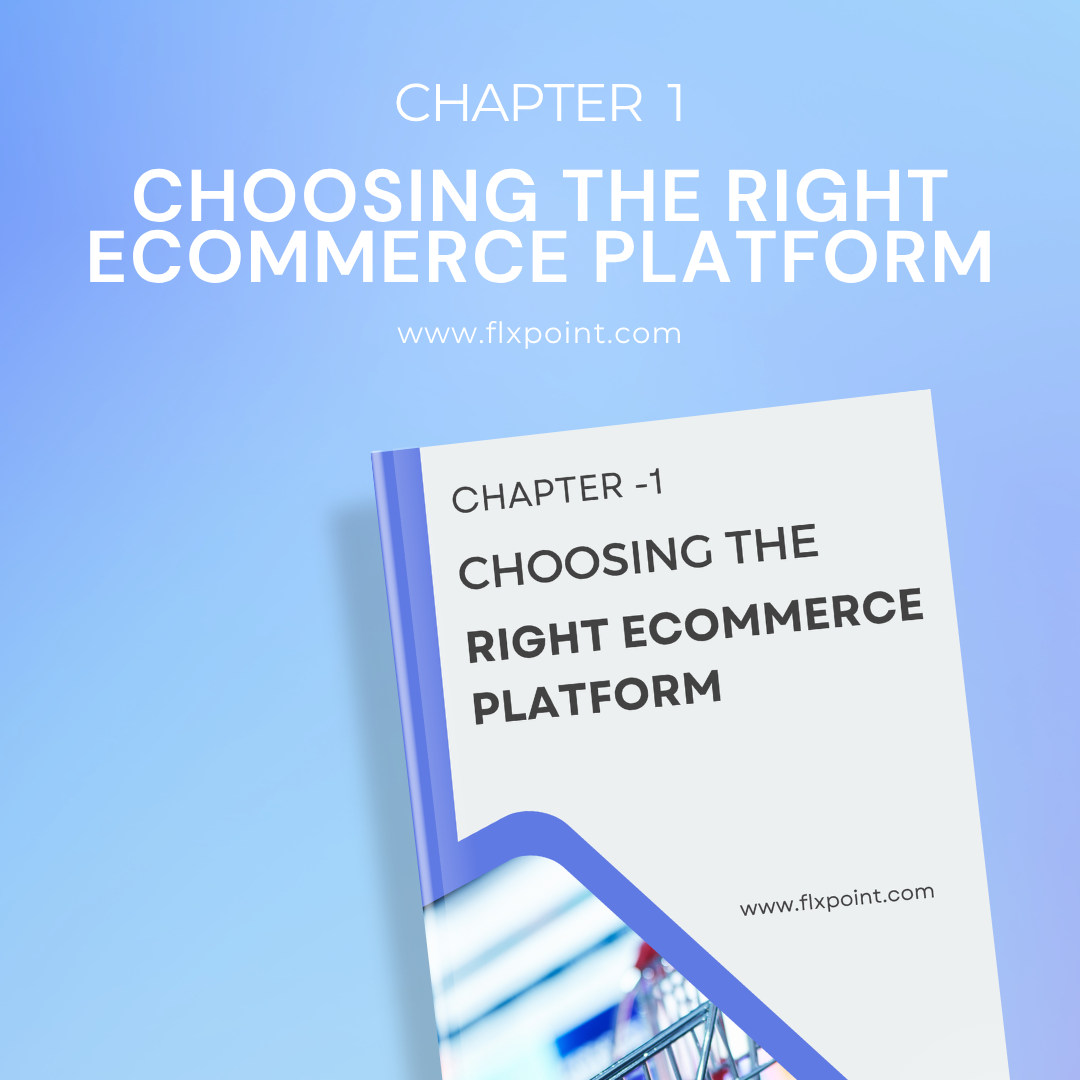
Your platform choice affects everything else you'll do. We compare Shopify, WooCommerce, BigCommerce, and Wix across what matters most: cost, scalability, marketing tools, SEO features, and payment options. Learn which platform fits your business size, technical skills, and growth plans—so you don't have to migrate later.
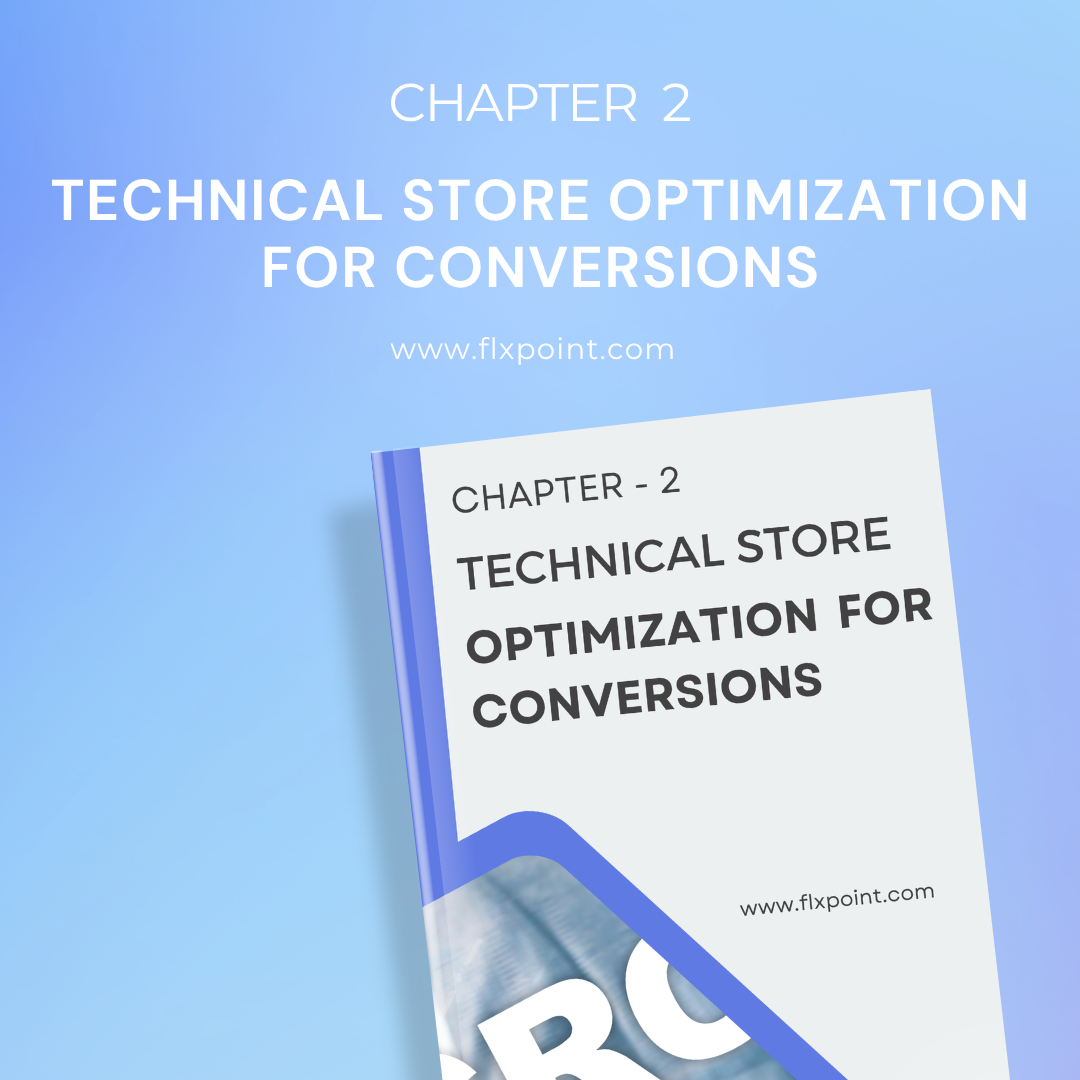
Small technical fixes create big revenue gains. Learn how to structure your store so customers actually buy, implement schema markup that helps you show up in search, speed up your site, and set up tools like Hotjar to see exactly where people get stuck in your buying process.
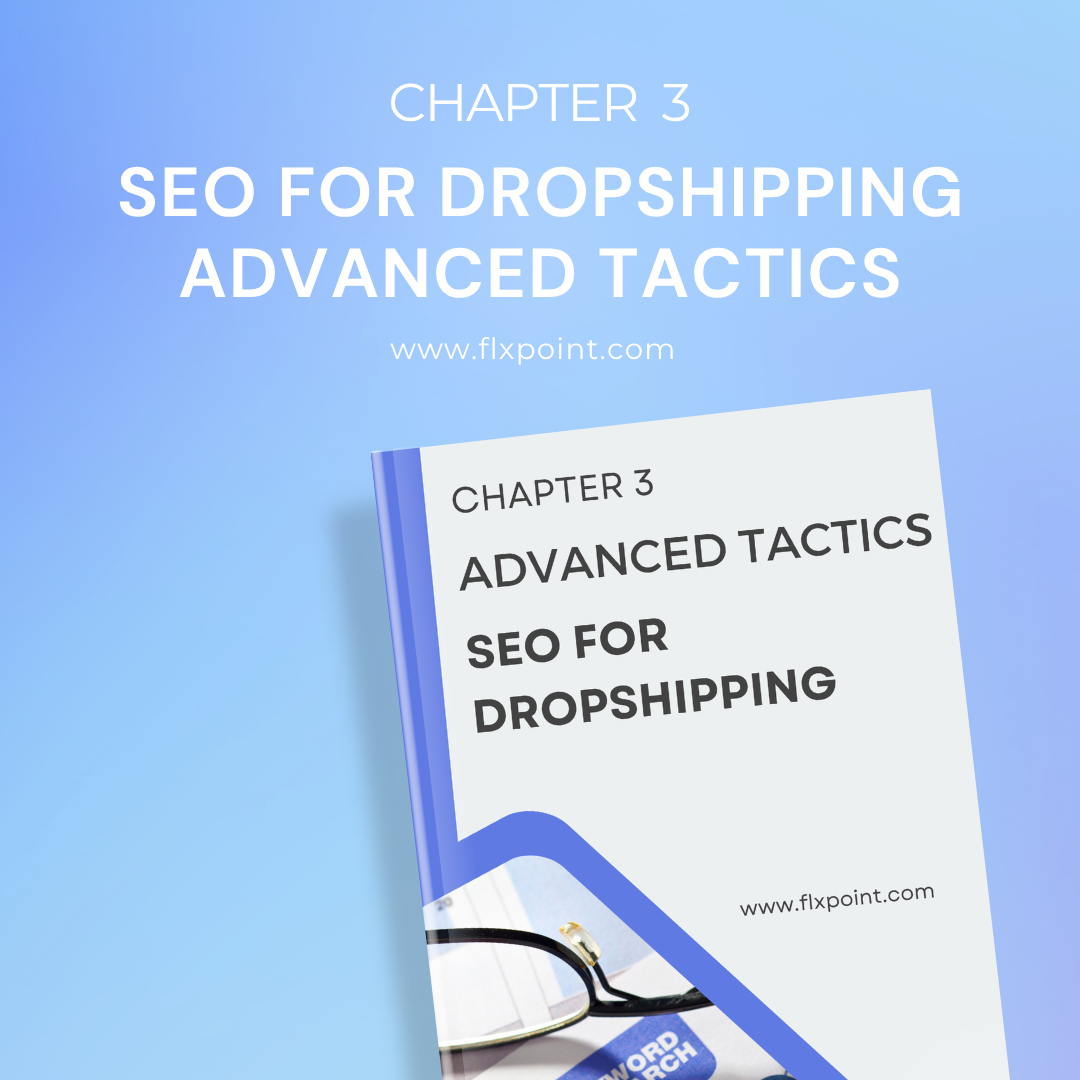

Stop wasting money on ads that don't convert. Build campaigns that work at every stage - from awareness to repeat purchase. Master Facebook ads, Google Shopping, Dynamic Product Ads, and figure out which touchpoints actually drive sales with proper attribution.
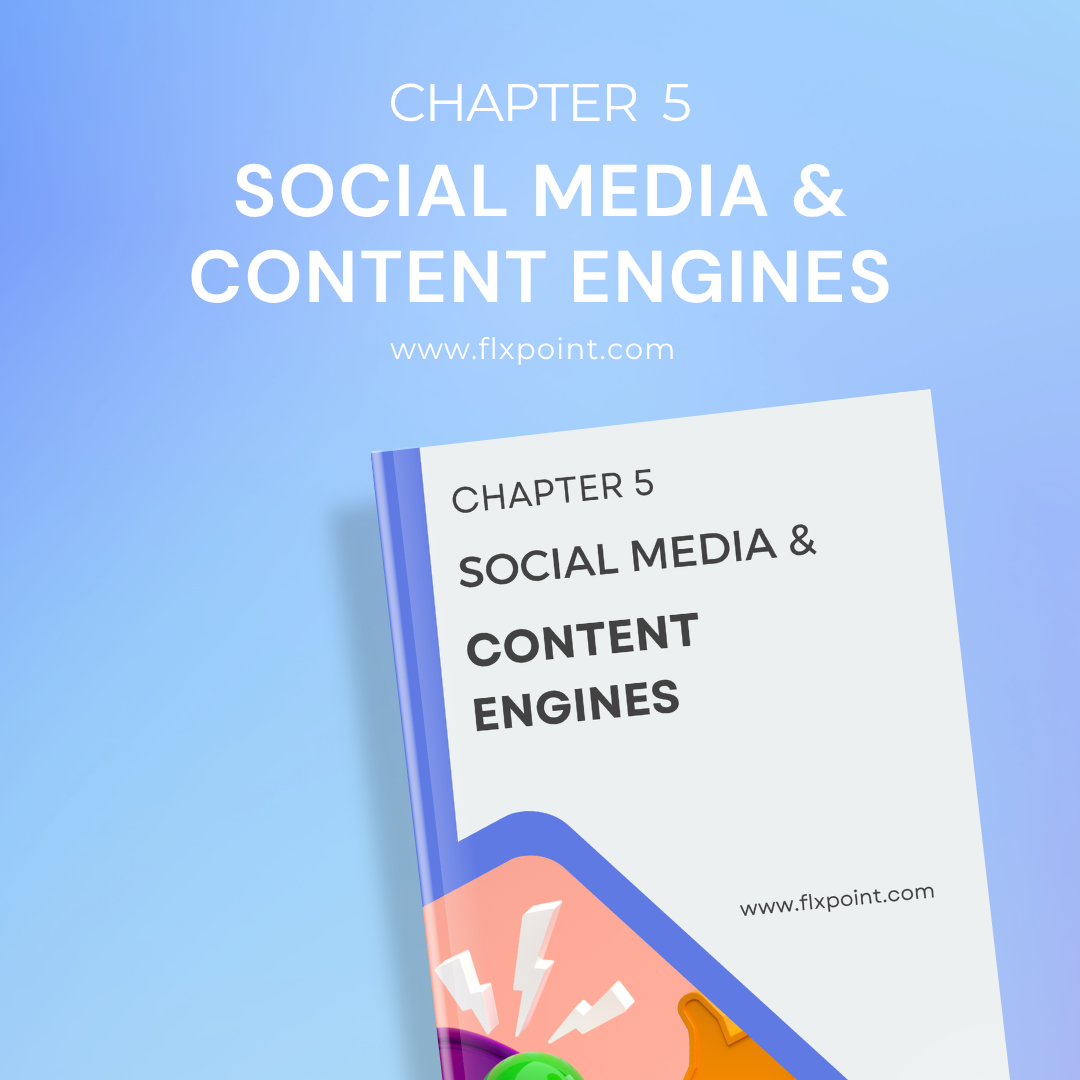
Create content systems that run themselves. Build engines for Instagram Reels, YouTube Shorts, Pinterest, and Stories. Use AI tools to scale content creation, collect user-generated content legally, create viral loops, and track what's actually driving sales.


